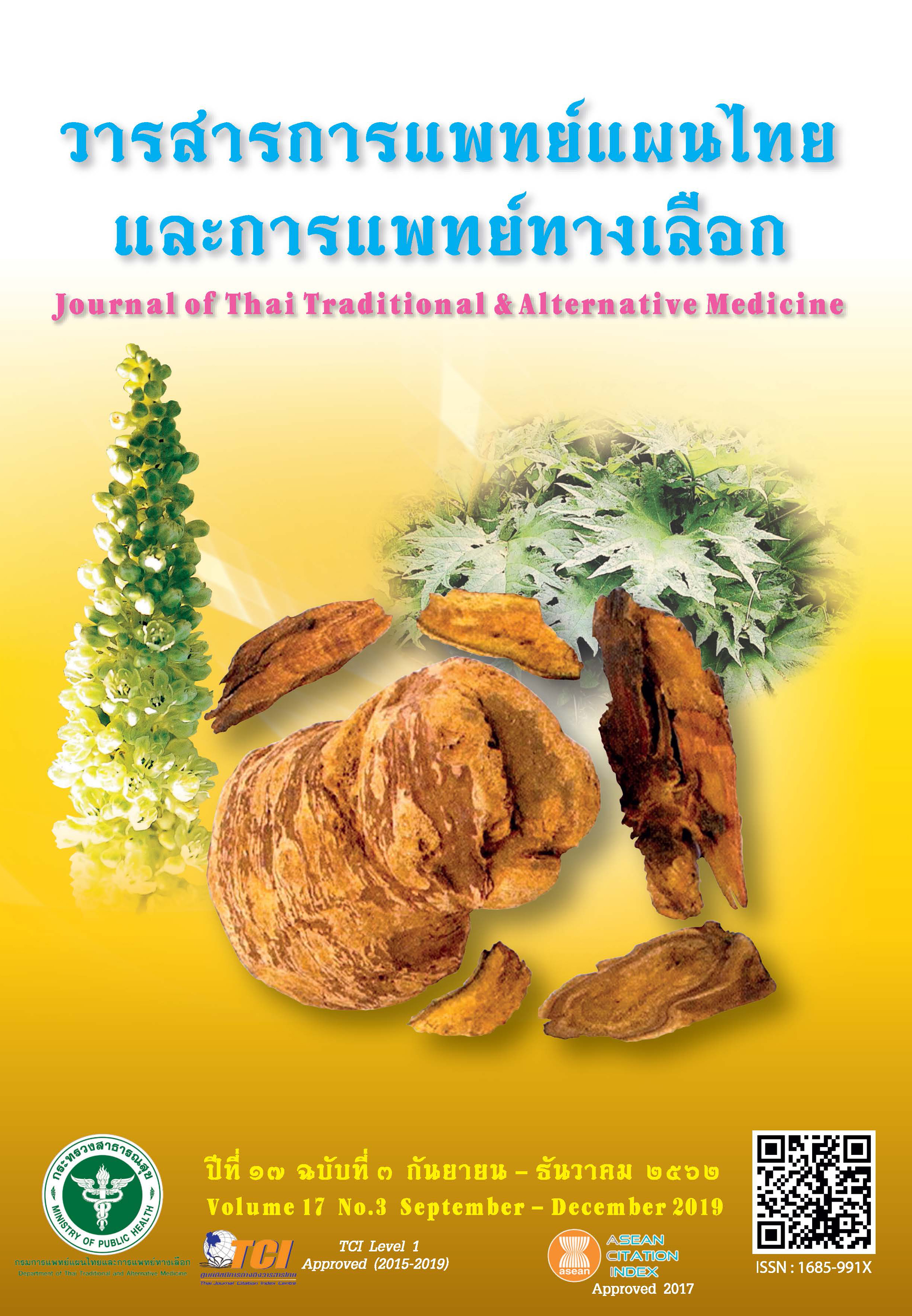Qualitative and Quantitative Analysis of Ginger Rhizome Using Ultra Performance Liquid Chromatographic Technique
Main Article Content
Abstract
The objective of this study is to develop the qualitative and quantitative analytical method of ginger rhizome by monitoring the pungent ingredients including gingerols and shogaols by using Ultra Performance Liquid Chromatographic (UPLC) technique. For qualitative analysis of ginger, 300 mg of powdered ginger was macerated in 20.0 ml of methanol for 24 h. Supernatant solution was pipetted and filtered through the nylon syringe filter. 3 μl of sample solution was injected into the chromatographic system consisting of AcquityTM BEH C18 2.1×50 mm, 1.7 μm column and 40-65% of acetonitrile solution in water as mobile phase. Gradient elution was performed. Flow rate was set at 0.6 ml/min. Chamber temperature of sample chamber and column were 35 and 40°C, respectively. Detection was performed at the UV wavelength of 226 nm. 6 active compounds including 6-gingerol, 8-gingerol, 10-gingerol, 6-shogaol, 8-shogaol and 10-shogaol were detected at the retention times at 1.71, 2.39, 2.77, 2.45, 2.91 and 3.65 min, respectively. This system could be also used for determination of 6-gingerol content. The validation result of the developed method exhibited the linearity of calibration curve of 6-gingerol was in the range
of 0.0474-0.2758 mg/ml with coefficient of determination (R2) 0.9998. Accuracy and precision were in the range of 100.68-101.19% and 0.43-0.51%, respectively. Limit of detection and limit of quantitation were 0.0038 and 0.0127 mg/ml, respectively. When 8 samples of ginger were analysed, the content of 6-gingerol was obtained in the range of 0.50-1.49% w/w.
Article Details
References
2. Boonyaprapat N, Chokechaicharernporn O. Samunprai maipeunban (1). Bangkok: Prachachon Co. Ltd; 1996. 895 p. (in Thai)
3. National List of Essential Medicines A.E. 2018. Published in Government Gazette on 19 January B.E. 2561 (2018). (in Thai)
4. Soonthorncharoennon N, Ruengwisate N. Analysis, research quality of Thai crude drug. Bangkok: Concept medicus Co. Ltd; 2008. 583 p. (in Thai)
5. The United State Phamacopoeial Convention. USP Dietary Supplements Compendium. Vol. 1. 2015:1146-50.
6. Department of Medical Sciences. Thai Herbal Pharmacopoeia 2018. Bangkok: Keawjawjom Printing & Publishing Suan Sunandha Rajabhat University; 2018. 172-9.
7. Pattamadilok D, Sakpetch A, Thiemthieprat P. Final report: Development and validation of analytical method for determination of gingerols in ginger using Ultra Performance Liquid Chromatography. Nonthaburi: Medicinal Plant Research Institute, Department of Medical Sciences; 2016. 24 p. (in Thai)
8. Shao X, Lv L, Park T, Wu H, Ho C.-T, Sang S. Quantitative analysis of ginger components in commercial products using liquid chromatography with electrochemical array detection. J. Agric. Food Chem. 2010;58:12608-14.
9. Department of Medical Sciences. A practical guide for single laboratory method validation of chemical methods. Nonthaburi: Department of Medical Sciences, Ministry of Public Health; 2006. 124 p. (in Thai)
10. Jung MY, Lee MK, Park HJ, Oh EB, Shin JY, Park JS, Jung SY, Oh JH, Choi DS. Heat-induced conversion of gingerols to shogaols in ginger as affected by heat type (dry or moist heat), sample type (fresh or dried), temperature and time. Food Sci Biotechnol. 2017;27(3):687-93

